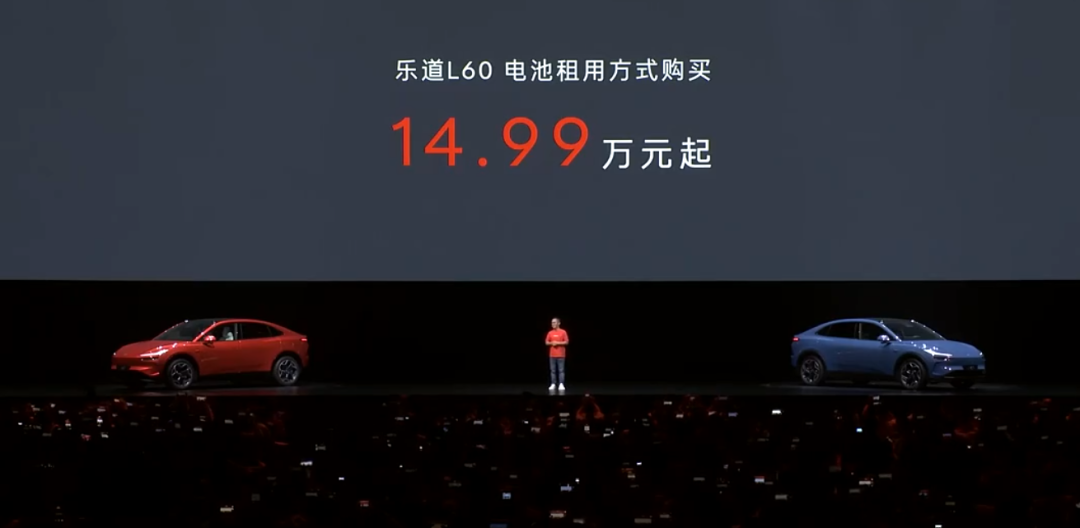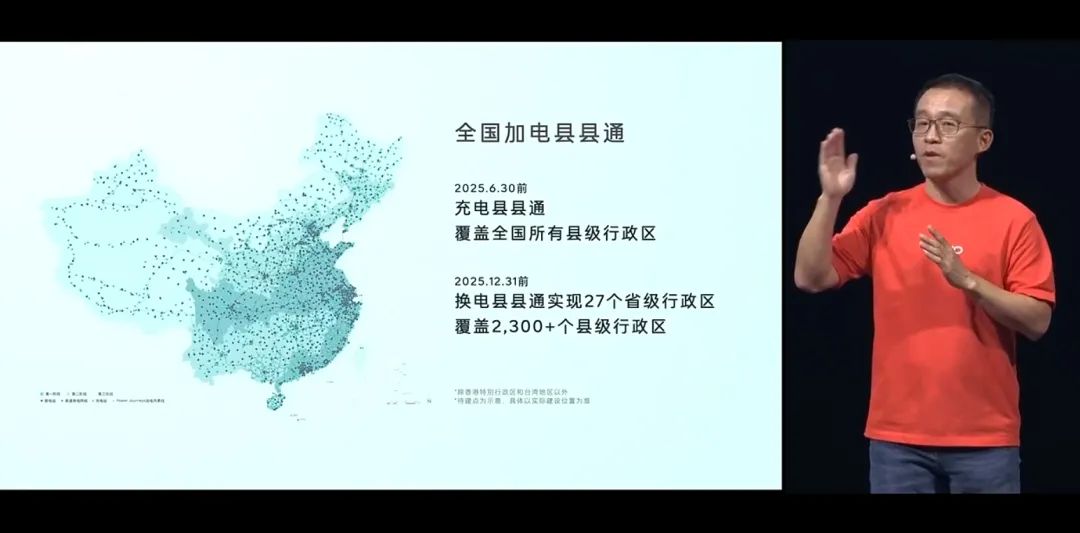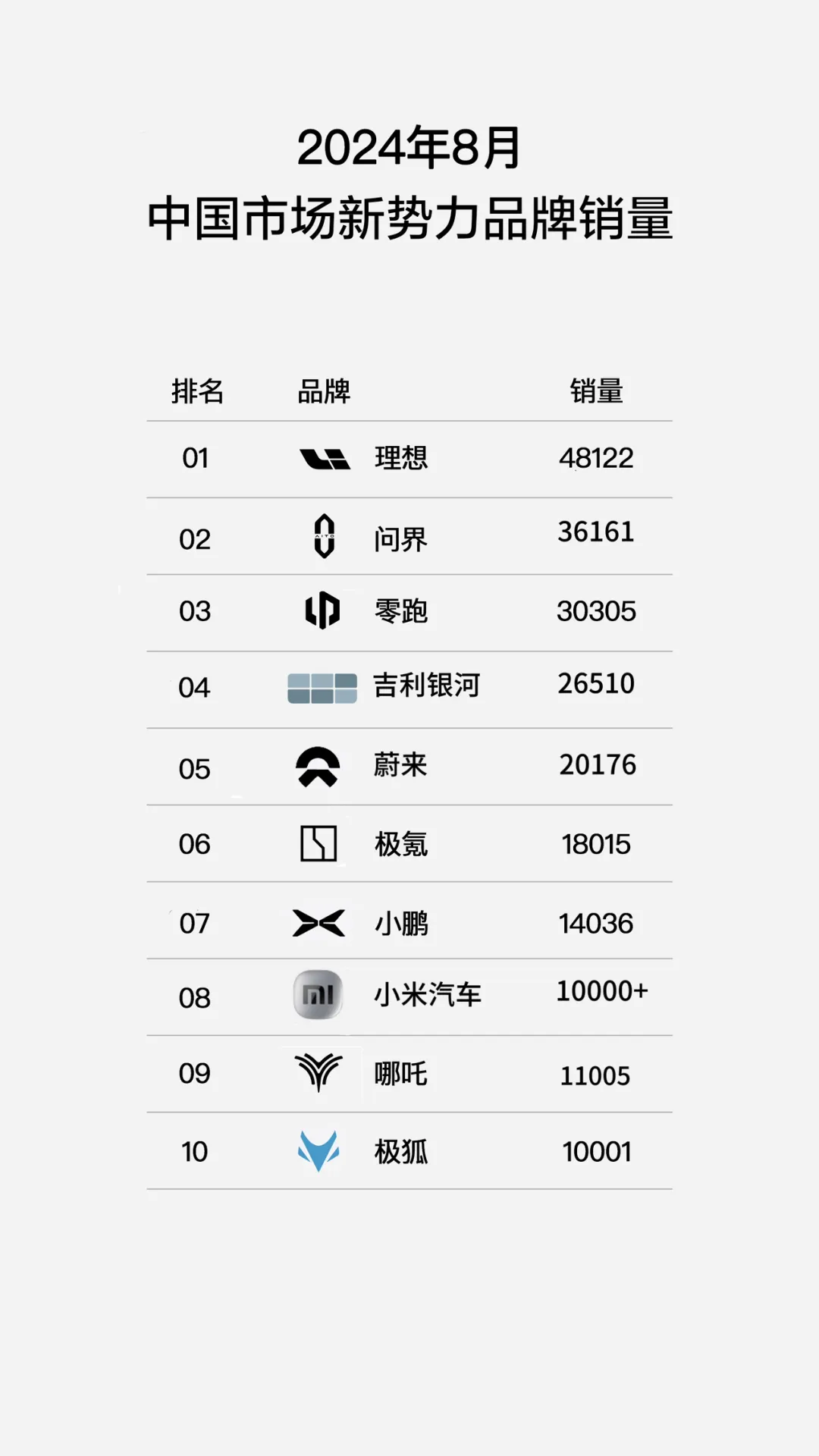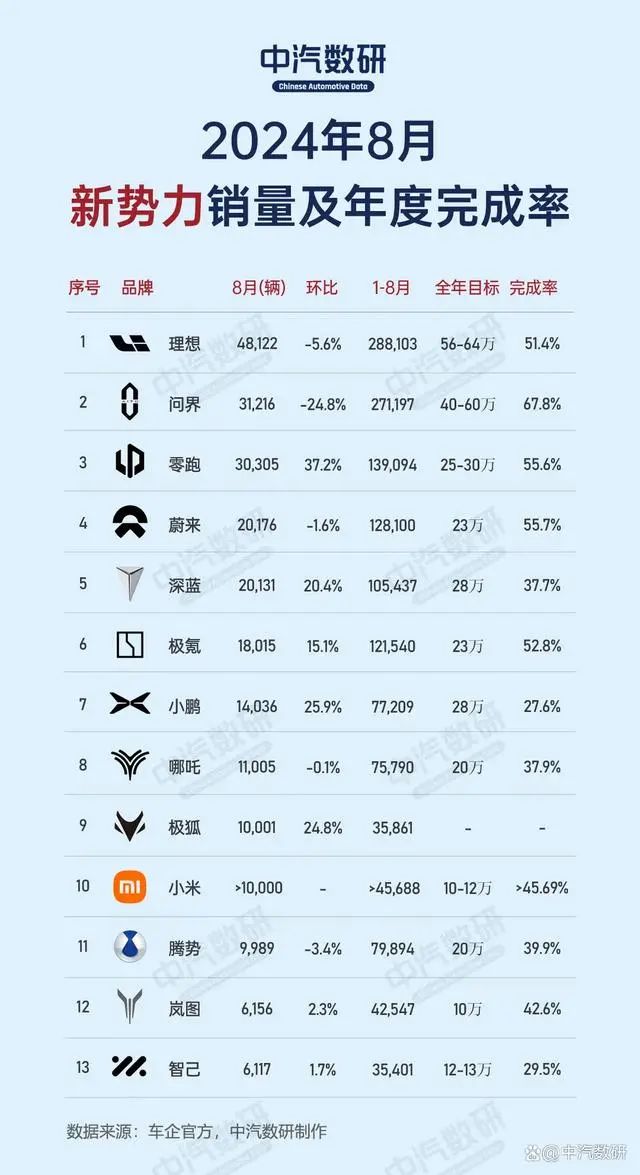New auto manufacturing forces have started selling 'Redmi' cars
![]() 09/20 2024
09/20 2024
![]() 472
472
Lei Jun once said that the difficulty of Xiaomi SU7 lies in pricing. Ultra-low prices are like drinking poison to quench thirst, so the final price is not lower than 200,000 yuan.
However, faced with the choice between survival and death, the new forces have all lowered their status and started making 'Redmi' cars.
On the evening of September 19, NIO's sub-brand Ledao finally announced the price of L60: a rental price starting at 149,900 yuan and a vehicle price starting at 206,900 yuan, shocking the entire audience.
This pricing shows that Li Bin has made up his mind.
Because NIO ES6, which is also a mid-size SUV, starts at 338,000 yuan, and the rental price starts at 268,000 yuan.

Image source: Screenshot from the conference
He Xiaopeng has already tasted the joy of making 'Redmi' cars. The Xiaopeng MONA M03, starting at 119,800 yuan, is predicted by car fans to have received an additional 16,000 orders in the past week, the most among the new forces.
Leapmotor, which was the first to produce a 'half-price Lixiang L8,' has quietly become rich. In the new force delivery rankings from January to August, it has risen to the top three, second only to Lixiang and Hongmeng Smart Driving.
The new forces have been making cars for many years, but only Lixiang has achieved annual profitability.
In the current complex market environment, the new forces, which are still suffering heavy losses, must seize the opportunity to increase sales and achieve profitability through scale, or the future is uncertain.
There is nothing wrong with using price reductions on new products to boost sales. The reason for launching sub-brands is also self-evident - no one wants to make their brand cheap.
Trying to have it all is inherently difficult to achieve.
Of course, if, as He Xiaopeng predicted, only seven automotive brands will survive in the next ten years, who wouldn't want to stay at the table?
01
Should we go above or below 200,000 yuan?
In recent years, the new energy vehicle market has been divided by the 200,000 yuan mark.
New forces such as NIO, Xpeng, and Hongmeng Smart Driving have mostly been competing above 200,000 yuan, maintaining their tone and competing for the middle class. Below that, it's the affordable and high-volume models dominated by BYD.
However, as the pressure of losses and sales continues to increase, the new forces have also become fiercely competitive.
The L60 from Ledao, announced on September 19, is not essentially a low-end NIO model:
The new car is based on NIO's latest generation NT3.0 platform, featuring a 900V ultra-high-voltage platform. The trunk can accommodate a fridge in collaboration with Midea, and there is even a slow-charging port.
In the opinion of the author, although every sentence of the conference was aimed at Tesla Model Y, it may have been painful for NIO ES6 owners.
As new energy vehicles with extremely fast update speeds, the pain of backstabbing has not yet fallen on NIO owners.
Since the price has been reduced, the target audience must also be adjusted, especially customers outside first- and second-tier cities.

Image source: Screenshot from the conference
Ledao understands this very well. Although there are currently only 300+ battery swap stations, this number will increase to 1000+ within the year, and by the end of next year, battery swap services will be available in every county. In addition, Ledao's own OBD autonomous driving system is also emphasized to be user-friendly nationwide.
Delivery is also very fast, starting at the end of September, much faster than NIO's usual pace and even allowing some customers to pick up their cars in time for the National Day holiday.
Xpeng has set an example by delivering the 119,800 yuan starting price Xpeng MONA M03 very quickly, having learned from the slow delivery of last year's G6.
Sales are self-evident, with Xpeng's weekly sales rising from over 2,000 last month to over 4,000 this month, and monthly sales are expected to exceed 20,000.
Of course, it's not just about low prices.
02
Should we develop extended-range electric vehicles or not?
What kind of powertrain do car buyers want?
This is the biggest controversy in the new energy vehicle industry at present. There are currently three factions: one led by NIO, which insists on battery swap; one that has been validated by Lixiang in the market, which is extended-range hybrid; and another that relies on pure electric charging.
Sometimes even brand manufacturers are confused, so a single car model often comes in both extended-range and pure electric versions.
Battery swap is not bad, but it requires significant upfront investment and is still in the coverage stage. Companies are hesitant to expect short-term sales increases.
An interesting set of data from the China Passenger Car Association in August shows that sales of pure electric vehicles grew by only 6.6% year-on-year, while sales of narrow-sense plug-in hybrids and extended-range models grew by a staggering 84% and 109%, respectively.
Among NIO, Xpeng, and Lixiang, the technological characteristics of the three companies were originally distinct: NIO focused on battery swap, Lixiang on extended range, and Xpeng on pure electric. NIO, with battery swap efficiency comparable to refueling, does not need to consider extended range. However, Xpeng is envious of the sales of extended-range vehicles.
Some say that He Xiaopeng spent several years proving Li Xiang's judgment.
According to 36Kr, Xpeng's first extended-range vehicle will enter mass production in the second half of next year, with the prototype being the Xpeng G9.

Image source: Auto Industry Focus
Not only Xpeng but also AVATR, which previously had all-electric models, has also announced its Kunlun extended-range technology, and its 07, 11, and 12 models will all have extended-range versions.
BYD's pure electric and plug-in hybrid models also each occupy half of the market.
Leapmotor has been switching from pure electric to extended range for several years. The Leapmotor C16, starting at 155,800 yuan, is even touted as a half-price Lixiang L8, complete with extended range, a fridge, a TV, and a large sofa. With sales exceeding 8,000 units in August, it has risen to the top four in medium and large SUVs in terms of sales, with overall monthly sales exceeding 30,000.
Models such as AITO M7 and AITO M9 from Huawei Hongmeng Smart Driving, which have created sales miracles, are also dominated by extended-range versions.
It can be seen that car buyers are not as accepting of pure electric vehicles as one might think. Conversely, the user experience of pure electric vehicles has not yet alleviated everyone's concerns.
Of course, some will argue that as charging technology and battery technology advance, these issues will become non-issues. But this is a big problem for manufacturers at present. If they don't sell well this year, the company may not exist next year, and no one can afford to wait.
Under such circumstances, it is better to consider extended range in addition to pure electric, as sales are more important than the boss's face.
Deal with the immediate fire first, then consider the distant water.
Returning to NIO, since it has chosen battery swap, it must go all the way.
Battery swap is less common in private cars but is becoming increasingly popular in buses and taxis. Moreover, the financialization of battery assets can open up a new track.
If this is successful, the company's foundation will be solid, and it can be said that Jin Chi's ambitions far exceed those of Li Xiang and He Xiaopeng.
03
Do we want sales or not?
With the auto market being so competitive this year, how can new auto manufacturing forces compete?
Company financial data and the market economic environment determine the strategies of manufacturers.
In the capital winter, new forces such as Evergrande Auto, HiPhi, WM Motor, Hetong Auto, and Faraday Future have fallen, and Nezha, Polestar, and Skyworth are also in peril. NIO, Xpeng, and Lixiang are also struggling.
Launching sub-brands to explore lower price points is a collective attempt.
According to the "2020 China Population Census Yearbook," 81.4% of households with cars have vehicles priced below 200,000 yuan. No company dares to ignore such a vast market.
According to the first-half financial report of 2024, Lixiang's revenue reached 57.3 billion yuan, an increase of 20.8% year-on-year, with a net profit of 1.7 billion yuan, a decrease of 47.50% year-on-year. However, it is the only profitable new force in the auto industry.
In contrast, NIO, Xpeng, and Leapmotor generated revenues of 27.4 billion, 14.7 billion, and 8.9 billion yuan, respectively, with net profits of -10.2 billion, -2.65 billion, and -2.2 billion yuan, continuing to suffer losses.
In the first eight months of the year, the annual sales completion rates of Lixiang, NIO, Xpeng, and Leapmotor were only 51.4%, 55.7%, 27.6%, and 55.6%, respectively. It can be said that none of them have caught up with the schedule, and their only hope lies in the golden September and silver October.

Image source: China Automotive Technology & Research Center
Scale effects can spread the cost per vehicle, which is also the reason for BYD's rapid development. Sales are life, and we can see that BYD's gross margin is growing.
Should we still cling to high-end car owners? Anyway, many of them hover around monthly sales of around 1,000 vehicles, so scale effects are out of the question.
After seeing the reality, is it good to reduce prices for new products or increase configurations for new products?
Previously, Zeekr's strategy of "selling three generations in one year" showed that it could attract a wave of new car owners with quick short-term results but affected its reputation. In the long run, this strategy seemed aggressive and harmful to the brand.
Caught between a rock and a hard place, the only choice is to strike a difficult balance. There seem to be many options, but in reality, there are few paths to take.
At this critical juncture, new auto manufacturing forces are scrambling to create their own 'Redmi' cars, seemingly taking a risky but necessary path.








